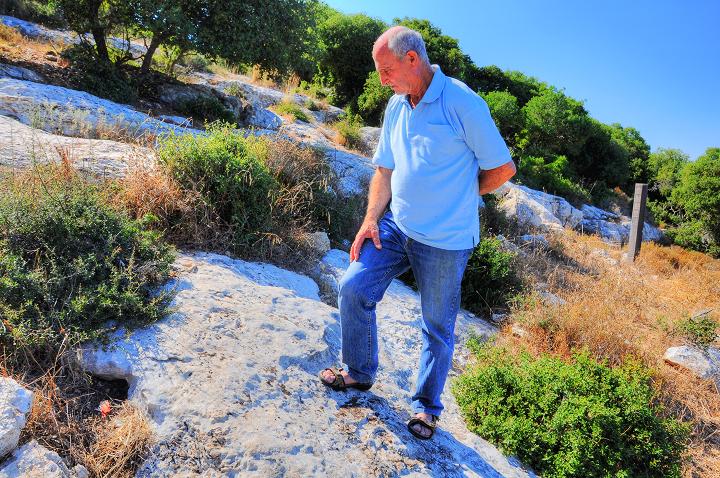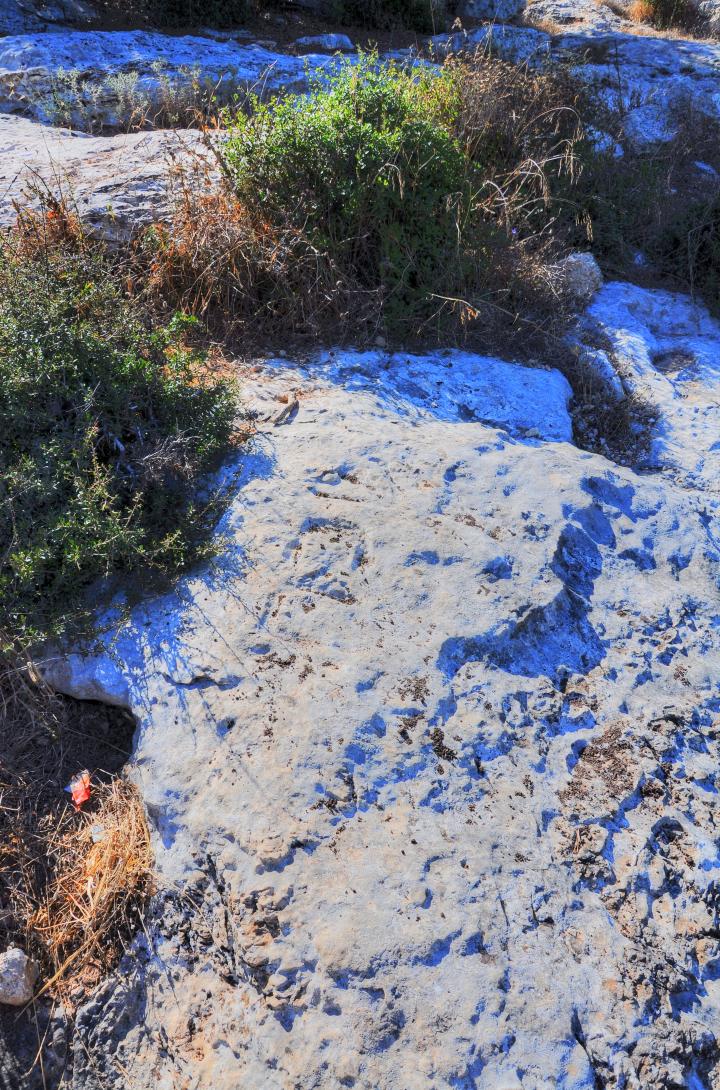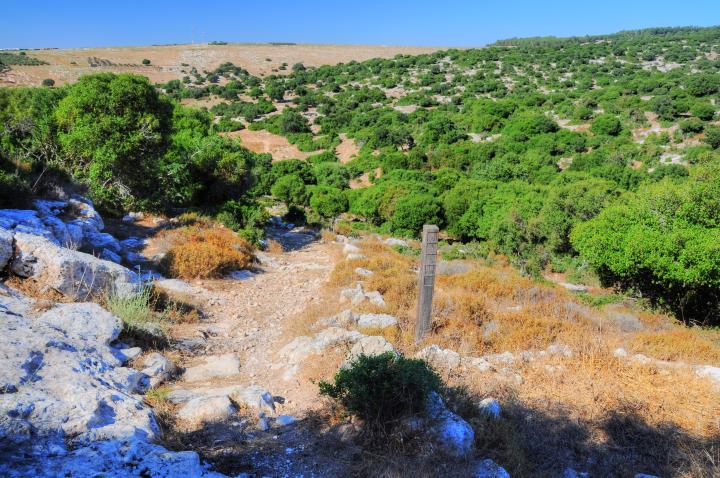BibleWalks Exclusive Discovery! A rock carving on a stone near the communal settlement of Timrat, located in the Lower Galilee near Nahalal, may have been a Sabbath (Shabbat) marker dated to the Roman period.
Nathan, a grandfather who visits his daughter’s family in Timrat, often takes the dog for a walk in the nearby woods. A month and a half ago he noticed a number of faint lines carved on the face of a stone along the path. He passed this rock many times, but apparently the angle of the light enhanced the lines at that time. This caught his attention, and so he climbed up the hillside to check it out. At first, they seem natural, as the rocks are crisscrossed by natural cracks and breaks.

– Nathan observing the rock
After looking closer, he was surprised to find an ancient marking. There were 3 letters carved into the rock, which clearly were chiseled into the surface of the rock. Initially, he thought it spelled in Hebrew letters as “שכח” (meaning: “forget”).

The marking on the rock
After checking with Biblewalks through his neighbor, Uncle Ofer, we have speculated that the word may have been “שבת” (Shabbat, or: Sabbath). Ofer filled up the carved letters with soil, and the letters came up with a better contrast, as seen below.
Ancient Sabbath markers are rare, and this finding is exciting. The purpose of the marker is to to mark the outer boundaries around the village. According to Talmudic writings, based on a biblical texts, Jews are commanded not to carry burdens on the Sabbath, outside of the “Sabbath zone”. Exodus 16:29-30: “See, for that the LORD hath given you the sabbath, therefore he giveth you on the sixth day the bread of two days; abide ye every man in his place, let no man go out of his place on the seventh day. So the people rested on the seventh day”. Jeremiah 17:21-22: “Thus saith the LORD; Take heed to yourselves, and bear no burden on the sabbath day, nor bring it in by the gates of Jerusalem; Neither carry forth a burden out of your houses on the sabbath day, neither do ye any work, but hallow ye the sabbath day, as I commanded your fathers”.

The marking on the rock, filled with soil – Photo by Uncle Ofer
The limitation of work on the Sabbath includes walking at some distance outside the living areas. In order to prevent confusion, the boundaries of the area around the city or village are marked by poles, stones, or – as in modern times – by wire. The markers are located approximately 1km to each direction of the municipal area.
We speculate that the marker in Timrat is related an ancient town, located approximately 1kmto the south-east of the marker. This Jewish Roman town was called “Mahalul”, and flourished from the commercially strategic location during the Roman/Byzantine times (Mishna and Talmud). It is mentioned in the Jerusalem Talmud (Megila page 2 , 2 1:1, Hebrew): “Nahalal is Mahalul”, and listed among the walled cities from the period of Joshua. The distance from the Roman village to the Timrat Sabbath stone fits the exact range of the perimeter as defined by the Jewish tradition.
 Read more on the site of Nahalal /Mahalul.
Read more on the site of Nahalal /Mahalul.
Another candidate for the town related to the marker is Simonia, located around the nearby Tell Shimron. This was another Jewish town during the Roman and Byzantine periods. It is also located about 1.5KM from the marker, on the south-west side.
 Read more on the site of Nahalal /Mahalul.
Read more on the site of Nahalal /Mahalul.
The marker was probably located on the path from Mahalul or Simonia to the main Roman road from Legio to Sepphoris. In the photo below is a north view towards the location of the Roman road. This is a modern walking path, but may have followed the ancient path, passing by the Sabbath marker.

North view – a modern path going north
Another Roman period Sabbath marker is located in the nearby Roman site of Usha. The marker is carved into the face of a flat rock, on the side of a Roman road. It is written in Greek (“CAB”), and according to some scholars it may be the name of the Sabbath zone (the prefix of the word CABAT – Shabbat).
To confirm this amazing finding, BibleWalks has contacted Dr. Moti Aviam, an expert archaeologist of the Galilee. He visited the site, confirmed our discovery, and intends to publish it soon.
If you would like to see for yourself the Sabbath marker in Timrat, drive to the end of Moran street, then follow the path for about 40 meters. You can also try to find other Sabbath markers around the two ancient towns.

No comments:
Post a Comment